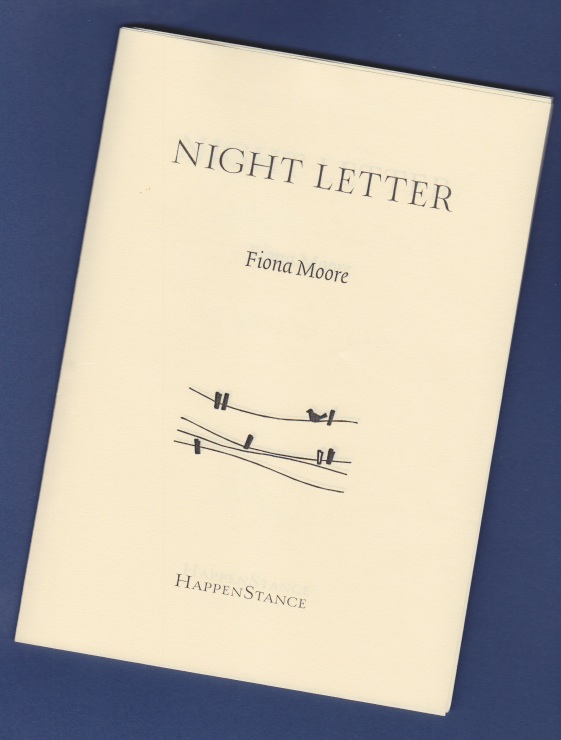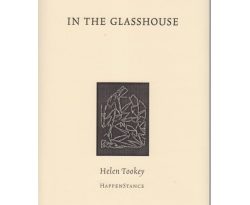Night Letter by Fiona Moore
– Reviewed by Jessica Traynor –
Fiona Moore’s Night Letter is a short pamphlet of eleven poems, in which dreams wind their tendrils through our waking hours. This is an impressive collection, with a playful approach to the conceptual. Dense with memorable imagery, yet pleasingly relaxed in its rhythm, the pamphlet’s first poem ‘Numberless’ sets the tone for what’s to come:
It’s as if
the dream were acknowledging
numberless permutations
of daily life, so our waking selves
don’t need to, otherwise long ago
I’d have walked through the upstairs
bedroom window which leads
by now, to many places.
The unusual enjambment aids the rhythm, allowing the reader to participate directly in the poet’s discoveries.
‘Dimensional’ cleverly subverts that most quotidian of activities, the untangling of a wet duvet. In Moore’s hands, the duvet becomes a ravenous deep-sea creature, a giant squid or pale octopus that has crept from some dark subconscious space into our world. This surreal take demonstrates the poet’s imaginative touch, while also making a wry comment on the primitive hunger of desire:
the duvet starts eating itself, eats its own slack
pouch of inside-outness so it has to be held
over the steps by the back door, shaken
until its bamboo pattern turns to storm…
The liminal space between memory and imagination, dream and waking is confronted with rare skill in the pamphlet’s title poem, with its poignant but clear-eyed address to a lost friend who didn’t believe in an afterlife: “…if you’re out there, please / forgive me for imagining / you, out there.” (‘Night Letter’)
This is an elegiac pamphlet that contrasts minutely detailed intimacies with panoramic vistas, in poems such as ‘The Embrace’ and ‘City From
A Hill, Through Open Windows’, the latter widening perspective to encompass the dreams of “…eight million sleeping – curled, sprawled, / together or alone – / a counterpane of bodies…”
We then zoom back into the fragmented intimacies of the first-person experience of sleep, with the delicate ‘Sleep Sonnet’, its lace-like collage of stations, upholstery, and a women painting her nails – all glimpsed in the blinking half-sleep of a train journey – and ‘Poem in Which I Think Myself Out’, which steps out of the open window referred to in the pamphlet’s first poem, into a vivid stream of consciousness:
Do I
exist when I’m not in the mirror;
and what if
the large rusty manhole
on the swimming-pool floor
were to open? Our bodies
jammed in the sewer like pale fish.
As with ‘Dimensional’, the imagery here is stark and, like all dream imagery, has the potential to tug the edges of our anxiety. But the effect created is lasting – testament to a deeply meditative and questioning consciousness, capable of creating unique and memorable poems.





